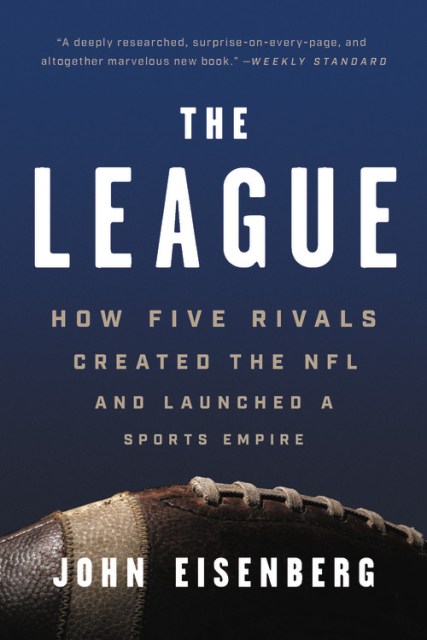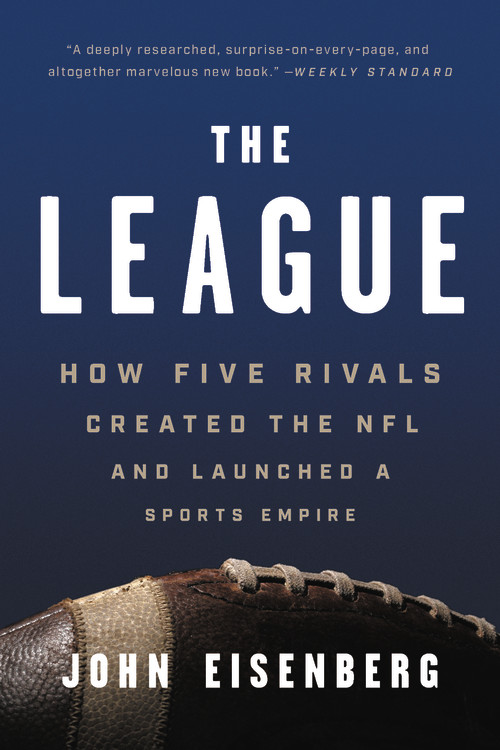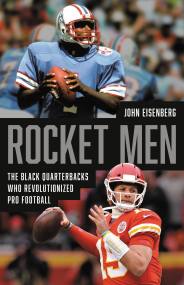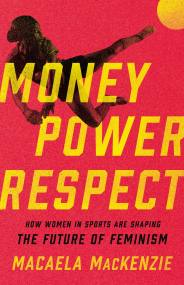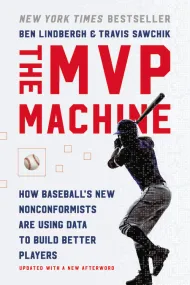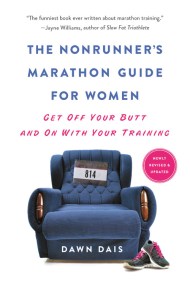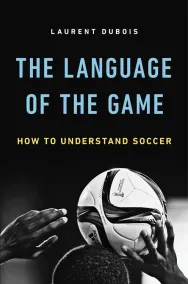Promotion
Use code MOM24 for 20% off site wide + free shipping over $45
The League
How Five Rivals Created the NFL and Launched a Sports Empire
Contributors
Formats and Prices
Price
$19.99Price
$25.99 CADFormat
Format:
- Trade Paperback $19.99 $25.99 CAD
- ebook $14.99 $19.99 CAD
- Audiobook Download (Unabridged)
This item is a preorder. Your payment method will be charged immediately, and the product is expected to ship on or around October 1, 2019. This date is subject to change due to shipping delays beyond our control.
Also available from:
The epic tale of the five owners who shepherded the NFL through its tumultuous early decades and built the most popular sport in America
The National Football League is a towering, distinctly American colossus spewing out $14 billion in annual revenue. But it was not always a success. In The League, John Eisenberg focuses on the pioneering sportsmen who kept the league alive in the 1920s, 1930s, and 1940s, when its challenges were many and its survival was not guaranteed. At the time, college football, baseball, boxing, and horseracing dominated America's sports scene. Art Rooney, George Halas, Tim Mara, George Preston Marshall, and Bert Bell believed in pro football when few others did and ultimately succeeded only because at critical junctures each sacrificed the short-term success of his team for the longer-term good of the league.
At once a history of a sport and a remarkable story of business ingenuity, The League is an essential read for any fan of our true national pastime.
Genre:
-
"John Eisenberg tells the fascinating account of how five owners, including the Bears's George Halas, cut through their disputes and differences to work together to form the foundations of the league."Chicago Tribune
-
"The pluck-and-luck tale of the creation and stabilization of the league is a small but exemplary chapter in American capitalism and popular culture."Wall Street Journal
-
"[A] deeply researched, surprise-on-every-page, and altogether marvelous new book"Weekly Standard
-
"Drawing on extensive research and personal interviews with descendants of the principle figures, Eisenberg (That First Season) puts a nearly century-old story into contemporary context. Football fans of all teams will appreciate this fascinating history."Publishers Weekly
-
"A readable and fresh look at the early history of the NFL"Library Journal
-
"Fans who only know the league as it exists today will be shocked and fascinated by its early years."Booklist
-
"A rich history of the rise of the National Football League from its virtual obscurity at its genesis in the 1920s to its position as an economic and cultural powerhouse today... Thoroughly researched and gracefully told... An engaging and informative cultural history, on and off the gridiron."Kirkus (Starred)
-
"In The League, John Eisenberg goes deep. He takes us to where it all started, in smoky backrooms, when the NFL-an American monolith now-was more David than Goliath. Carefully researched and astutely narrated, this is a fascinating time-transport trip that tells us as much about America as it does about football.Gary M. Pomerantz, author of Their Life's Work
-
"We have had some terrific owners since the first half of the 20th century but founders are founders, and this is their marvelous story--how they survived the Great Depression and a World War, scrambling to make their player payrolls from week to week. They did it through their incredible character, loyalty to each other, and their love of the game--and they built the greatest sports league in America."Ernie Accorsi, former General Manager of the Baltimore Colts, Cleveland Browns, and New York Giants
-
"Talk about a team of rivals ready to claw each other to death on Sundays and join forces to sell their game from Monday to Saturday, this is it! Halas, Mara, Marshall, Bell, and Rooney-this is their story. It is also the NFL's story. How the men and the league came though the ballyhoo of the 1920s, survived the Great Depression and World War II, and set the stage for football's ascendency as the national game is told by John Eisenberg with humor, heartbreak, and insight. Before the owners were billionaires, they were just a collection of scoundrels who believed in football and money."Randy Roberts, coauthor of A Season in the Sun
-
"John Eisenberg has achieved something remarkable: He has uncovered a riveting story from the early days of the NFL that has yet to be told. Better yet, Eisenberg's deeply researched, put-you-there narrative is written with a novelist's flair-you'll feel like you're breathing the same air as the five men who risked it all to turn a struggling league into the juggernaut it is today. This is a movie waiting to be made."Lars Anderson, New York Times bestselling author of The Storm and the Tide
- On Sale
- Oct 1, 2019
- Page Count
- 416 pages
- Publisher
- Basic Books
- ISBN-13
- 9781541618640
Newsletter Signup
By clicking ‘Sign Up,’ I acknowledge that I have read and agree to Hachette Book Group’s Privacy Policy and Terms of Use
